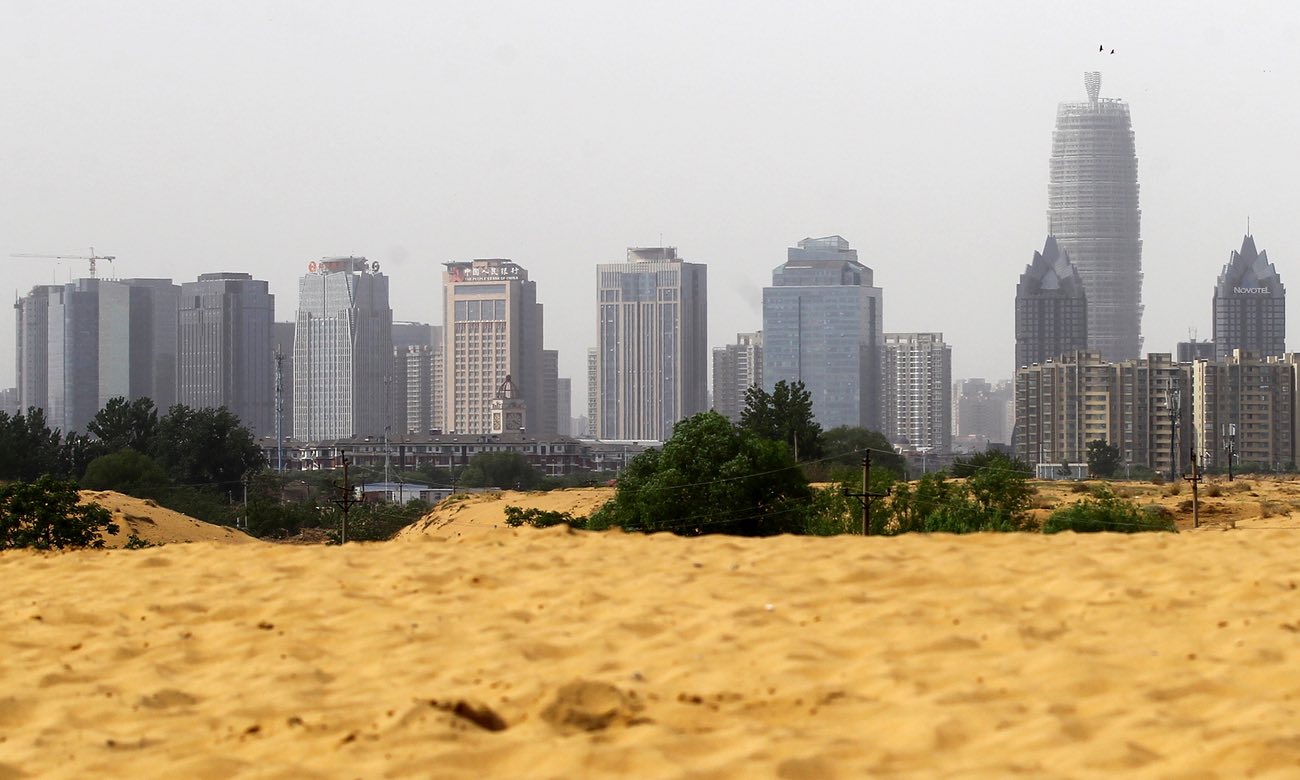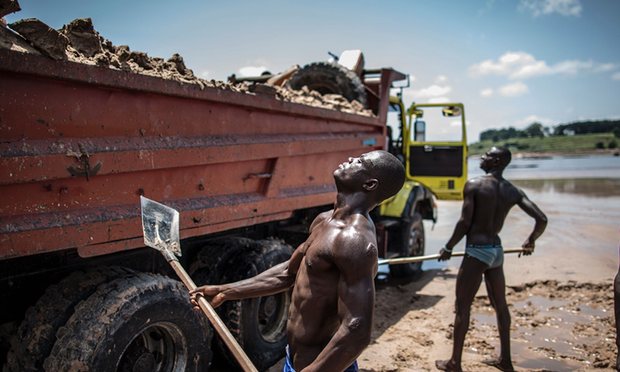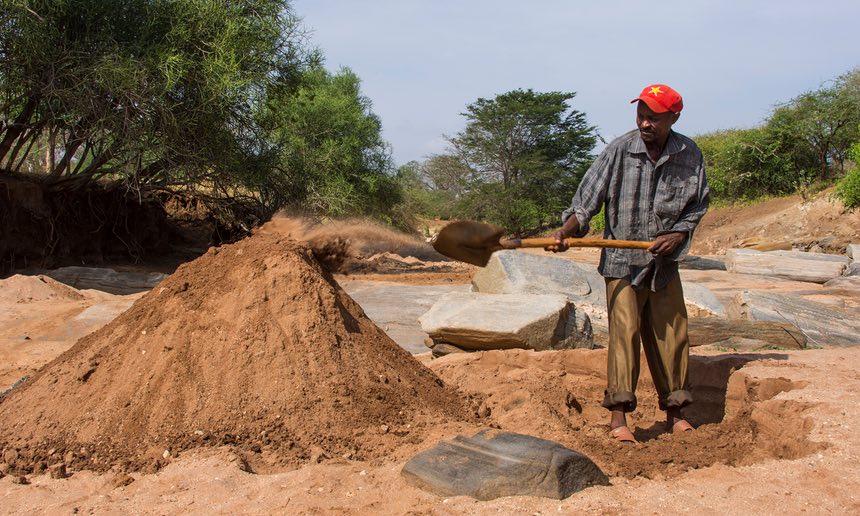PBS: Escaping Eritrea … [Read More...] about ካብ ውሽጢ ቤት ማእሰርታት ኤርትራ
Vince Beiser |
"We don't take sides; we help you see more sides."

Published:
PBS: Escaping Eritrea … [Read More...] about ካብ ውሽጢ ቤት ማእሰርታት ኤርትራ
By AHN
Vince Beiser |

In the dark of the night of 20 December, two Kenyan truck drivers met a blazing death. The men were loading up their vehicles at around 2am on the bank of the Muooni river, about 60 miles south-east of Nairobi, when a mob of local youths descended on them. The attackers torched the lorries, burning the drivers “beyond recognition”, police told a local newspaper. A third truck driver was shot with arrows.
The grisly episode was the most dramatic outbreak in a wave of recent violence in Makueni County, an impoverished rural area that is home to just under 1 million people. In the last two years, at least nine people have been killed and dozens more injured, including police officers and government officials. The carnage has been sparked by an unlikely substance that is fast becoming one of the 21st century’s most important commodities: sand.
Though most people never give it a second thought, sand is a crucial ingredient in the construction of roads and buildings – the skeletons of modern cities. Concrete and asphalt are largely just sand and gravel glued together with cement.
In Kenya, as in most of the developing world, cities are growing at a frenzied pace. Nairobi’s population has increased tenfold since the country became independent in 1963, and is now fast approaching 4 million. The number of urban dwellers in the world has shot from fewer than 1 billion in 1950 to almost 4 billion today, and the UN predicts another 2.5 billion will join them in the next three decades. That’s the equivalent of adding eight New York Cities every year.

Creating buildings to house all the people and the roads to knit them together requires prodigious quantities of sand. Worldwide, more than 48bn tonnes of “aggregate” – the industry term for sand and gravel, which tend to be found together – are used for construction every year. That number is double what is was in 2004. It’s an industry worth hundreds of billions of dollars annually.
Pulling all of that sand out of the ground, however, takes a severe toll on the environment. Across the world, riverbeds, beaches and floodplains are being stripped bare by sand miners. In response, authorities are trying to regulate the manner and location of extraction. In turn, it has spawned a global boom in illegal sand mining. “As the price of sand goes up, the ‘mafias’ get more involved,” says Pascal Peduzzi, a researcher with the United Nations environment programme and author of a study on sand mining.
Every year criminal gangs across the world dig up countless tonnes of sand to sell on the black market. One of Israel’s notorious gangsters started by stealing sand from public beaches. In Morocco, half of the sand used for construction comes from illegal mining. And in Malaysia, dozens of officials were charged for accepting bribes and sexual favours in exchange for allowing illegally mined sand to be smuggled out of the country.
Like any big-money black market, the sand trade is inciting violence. In Cambodia, environmental activists have been imprisoned for trying to stop illegal mining. In China, a dozen members of rival sand-mining gangs were sent to prison in 2015 after battling with knives in front of a police station. In that same year in East Java, Indonesia, two farmers – Salim Kancil, 52, and Tosan, 51 – led a series of protests against an illegal beach sand-mining operation. The mine operators threatened to kill them if they kept interfering; the farmers reported the threats to the police and asked for protection. Soon after, at least a dozen men attacked Tosan, ran him over with a motorcycle and left him for dead in the middle of the road. Salim was battered and stabbed to death. His body was left on the street with his hands tied behind his back.

In India, “sand mafias” have injured hundreds and killed dozens of people in recent years. The victims include an 81-year-old teacher and a 22-year-old activist who were separately hacked to death, a journalist who was burned to death, and at least three police officers who were run over by sand trucks.
Intimidation and corruption keep the authorities at bay. Police and government officials trying to crack down on the illegal sand trade in many countries have been assaulted, shot at, and occasionally murdered. But bribery is generally preferred. Truckers hauling illegal sand from Makueni to Nairobi freely admitted to Kenyan researchers in a 2015 report that they hand out bribes to police along the road. Makueni governor Kivuthu Kibwana has directly accused local police officials and provincial administrators of involvement with the illegal sand trade.
Sand mining has been banned in much of Makueni County in recent years, but the trade continues. “Between tonight and 7am tomorrow morning you can stand on the highway and count 100 lorries heading to Nairobi [full of sand],” says Timothy Maneno, a member of the Makueni County legislature.
“The damage in Makueni is very significant,” says Gino Cocchiaro, head of the extractive industries programme at Natural Justice, an environmental organisation based in Africa. “River systems have been so completely mined that the ecosystem has been drastically changed.”
Makueni is a semi-arid area whose people depend on livestock and substance farming, so any interference with water sources can have serious consequences. By stripping riverbeds and banks, sand harvesters have lowered water tables, eroded land and altered the course of rivers, putting them out of reach of farmers’ fields. The Kenyan government recently declared in an official bulletin that sand harvesting, as it is known, has “wrought wanton destruction on our rivers, farms and land to the point where it is now a human catastrophe”.
All of which has sparked clashes between sand miners, authorities and locals furious about the damage being done to their lands and communities. For several years now, they have battled with bows and arrows, machete-like pangas and Molotov cocktails.
One night last August, more than 40 men attacked a dozen county officers on the highway to Nairobi, beating them and setting their vehicles on fire. In early December, two more men were shot with arrows and four others attacked with pangas, allegedly by sand miners. That was followed by the deadly retaliation on 20 December. And earlier this month, a Makueni County police officer was hacked to death by suspected sand miners.
“The people harvesting the sand don’t care about the environmental consequences. All they want is the sand,” says Maneno. “Definitely the conflict will continue.”
As the demand for sand continues to grow around the world, the body count seems certain to rise with it.